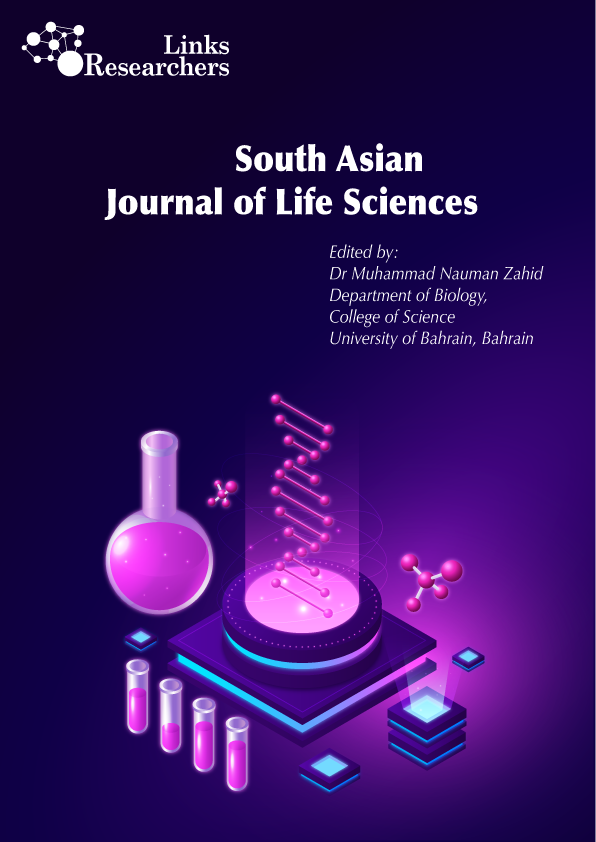Rashid Mahmood1*, Saima Asad2, Waqar Ahmad1, Ghulam Sarwar1, Muhamamd Khalid Rafique1, Noor Islam1, Ziyad Abdul Qadir1 and Zain Ul Abiden2
Ai Ming Zhou1,2, Guang Wen Liang2, Ling Zeng2, Yong Yue Lu2 and Yi Juan Xu2*
Marryam Bakhtawar1, Qamar Saeed1* and Naeem Iqbal2
K.N. Ahmed , M.A. Al-Helal, N-E-P. Khanom, S. Bulbul
Wali Khan1, Naushad Khan2 and Shaista Naz2*
Mohammad Siddique Munawar, Shazia Raja, Elizabeth Stephen Waghchoure* and Muhammad Barkat**
Anish Shrestha
Elizabeth Stephen Waghchoure-Camphor* and Mohammad Irshad**
Rashid Mahmood*, Elizabeth Stephen Wagchoure* and Ghulam Sarwar*
Khawer Jawad Ahmad*, Asif Razzaq*, Khalida Hamid Abbasi*, Muhammad Shafiq*, Muhammad Saleem** and Muhammad Arshadullah***
Samina Qamer*, Iram Nasir**, Um-Habiba Zafar**, Salma Sultana** and Tayyaba Sultana**
ROLE OF HONEY BEES FORAGING ACTIVITIES IN INCREASED FRUIT SETTING AND PRODUCTION OF APPLES APIS MELLIFERA MALUS DOMESTICA
Mahwish Rehman1*, Sajjad Ahmad1, Maqsood Shah1 and Inamullah Khan2
Hafiz Muhammad Tahir1*, Zafar Iqbal Khan2, Saira Batool2, Kafeel Ahmad2, Salma Begum2
plants for one hour. The mortality rate of honey bees in the control and insecticide
exposed group was compared. Overall, a significant decline in plant pollinators was
observed after application of lambda-cyhalothrin on the patch of marigold plants.
Lambda-cyhalothrin caused significant mortality (15/20=75%) in
Bina Khanzada1*, Ghulam Hussain Abro1, Tajwar Sultana Syed1 and Nazir Ahmed2
Muhammad Abu Bakar1, Muhammad Anjum Aqueel1, Abu Bakar Muhammad Raza1, Rashid Mahmood2, Ziyad Abdul Qadir2, Muhammad Arshad1 and Mubasshir Sohail3
Mahnoor Pervez and Farkhanda Manzoor*
Noor Islam1*, Rashid Mahmood1, Ghulam Sarwar1, Sarfaraz Ahmad2 and Saleem Abid3
Zulnorain Sajid1*, Muhammad Ramzan2 and Noreen Akhtar1
Muhammad Ahsan1*, Aneela Ramzan1, Muhammad Nafees1, Adnan Younis2, Muhammad Amin1, Gulzar Akhtar3, Khansa Saleem1 and Azka Sabeeh1
Murat Kulekçi1, Ecevit Eyduran2, Ayaz Yusuf Altın2 and Mohammad Masood Tariq3*
Naila Shahzadi1, Hafiz Muhammad Tahir1*, Shaukat Ali1, Muhammad Farooq Bhatti2, Azizullah1, Shafaat Yar Khan3, Abdul Khaliq4
Saima Naz1*, Ahmad Manan Mustafa Chatha2, Sajjad Ali2 and Muhammad Irfan Ullah3
Mudssar Ali1*, Muhammad Awais Ahmad1, Asif Sajjad2 and Shafqat Saeed1
Hairul Islam M. Ibrahim1,2, Abdalla A. Sayed1,3, Abdel Naser A. Ahmed4,5 and Emad A. Ahmed*1,6
Naila Shahzadi1, Hafiz Muhammad Tahir1*, Azizullah1, Muhamamd Farooq Bhatti2, Shaukat Ali1, Muhamamd Summer1 and Farman Ahmad Chaudhary3
Tariq Mahmood1*, Mamoona Wali Muhammad2, Sami Ullah1, Bilal Ahmad3, Zarmina Aslam4, Naveed Ahmad Khan5, Muhammad Shahzaib Tariq6, Muhammad Ali Raza6, Rana Usama Iqbal7 and Samia Zain8
Muhammad Awais Ahmad1, Mudssar Ali1*, Asif Sajjad2 and Shafqat Saeed1
Sumbal Nazir1*, Farkhanda Manzoor2, Ishrat Perveen3, Anum Rana2, Irum Naureen1, Abad Ali Nadeem3 and Hafiza Najma Naeem2
Asifa Hameed1*, Haider Karar2, Abdul Ghaffar1, Abid Hameed Khan1, Muhammad Mubashir1 and Ghulam Mustafa1
Jaisy Aghniarahim Putritamara1*, MB Hariyono1, Budi Hartono1, Hery Toiba2, Hamidah Nayati Utami3, Moh. Shadiqur Rahman2, Tina Sri Purwanti1
Tasleem Akhtar1*, Muhammad Farooq Nasir2, Imran Bodlah2 and Muhammad Adnan Bodlah3
Fatima Ali1*, Rimsha Tahir1 and Tahir Rehman Samiullah2
Baoxuan Nong1,2, Biqiu Wu3, Anlong Xu2, Wenai He2 and Yongfu Qiu2*
Kristina Morkūnienė*, Rūta Insodaitė, Laimutis Kučinskas, Renata Bižienė
Khalid Ali Khan1,2,3* and Hamed A. Ghramh1,2,4
Faisal Alzahani1* and Mohammed Abu El-Magd2*
IRFANA IQBAL1*, PAKEEZA TANWEER1, FARKHANDA MANZOOR1, MUHAMMAD NAUMAN AFTAB2, AFSHAN KALEEM3, ROHEENA ABDULLAH3, ASMA ZAFAR4 & MEHWISH IQTEDAR3
Khushdil Khan1, Mushtaq Ahmad1, Muhammad Zafar1, Khafsa Malik2, Shazia Sultana1, Shabir Ahmad1, Fawad Khan3, Asif kamal1, Kalim Ullah3
Shabana Islam1, Shahida Shujaat1*, Erum Akbar Hussain1, Mateen Abbas2
Tugba Bozlar1* and Nur Diktas Bulut2
Muhammad Wasif Gulzar*1, Riffat Maqsood1, Hussain Abbas1, Musharraf Manzoor1, Muhammad Suleman1, Hassaan Ahmad Bajwa2, Ali Hamza2, Shaher Yar1, Muhammad Zain1, Abdul Wadood1 and Noman Aslam3
Dalia M.A. Elmasry1*, Dalia M. El-Husseini1, Asmaa A. Eissa1, Zakaria R. Elkanawati2, Momtaz A. Shahein3, Amany Adel4
Faisal Noor1, Shahid Iqbal1, Muhammad Irfan Shan2, Muhammad Zeeshan Majeed3*, Abbas Sheer4, Muhammad Shahroz Khan3
Featuring
-
Cytochrome-P450 (CYP11B1 Gene) Polymorphism and its Role in Bovine Milk Producing Traits
Faheen Riaz, Sarfraz Mehmmod, Aatka Jamil, Khansa Jamil, Imran Riaz Malik, Muhammad Naeem Riaz and Ghulam Muhammad Ali
Sarhad Journal of Agriculture, Vol.40, Iss. 4, Pages 1522-1532
-
Assessment of Oxidative Stress Biomarkers and DNA Damage Among Pesticide Retailers in South Punjab, Pakistan
Abdul Ghaffar, Maria Niaz, Ghulam Abbas, Riaz Hussain, Fozia Afzal, Habiba Jamil, Ahrar Khan, Rabia Tahir, Muhammad Ahmad Chishti, Shahnaz Rashid, Shahzad Ali Gill, Aliya Noreen, Ayesha Maqsood and Kashfa Akram
Sarhad Journal of Agriculture, Vol.40, Iss. 4, Pages 1509-1521
-
Investigations on the Feeding and Spawning in Bagarius bagarius from Manchar Lake District Jamshoro, Pakistan
Bushra Shaikh, Naeem Tariq Narejo, Faheem Saddar, Muhammad Hanif Chandio, Majida Parveen Narejo, Urooj Imtiaz, Athar Mustafa Laghari, Ghulam Abbas and Shahnaz Rashid
Sarhad Journal of Agriculture, Vol.40, Iss. 4, Pages 1501-1508
-
Milk Quality Improvement Program for Small-Scale Dairy Farmers in Angochagua, Ecuador
Elena Balarezo, Jose Luis Flores and Miguel Angel Toro-Jarrin
Sarhad Journal of Agriculture, Vol.40, Iss. 4, Pages 1491-1500
Subscribe Today
Receive free updates on new articles, opportunities and benefits

© 2024 ResearchersLinks. All rights Reserved. ResearchersLinks is a member of CrossRef, CrossMark, iThenticate.












